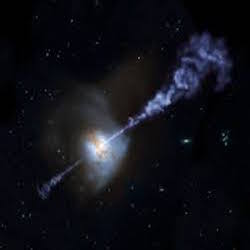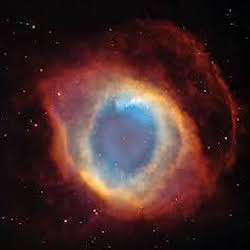
Exploring AI: Shaping the Future in Science, Society, and Critical Thinking (PHYSICS 101-8)
This course introduces students to the transformative world of artificial intelligence through the lens of its impact on science, society, and the way we think. We will explore the foundational concepts of AI, its applications in diverse fields, and the ethical dilemmas and societal challenges it presents. From understanding how machines learn to examining AI’s role in reshaping industries, culture, and human interactions, this course encourages critical thinking about the promises and perils of AI.
Students will develop a nuanced understanding of AI’s past, present, and future, while honing their ability to critically evaluate its implications for the world. No prior technical experience is required—just a curiosity to explore how AI is changing what it means to live and think in the 21st century.
Image Credit: Xiaodong Yan/Northwestern University

Data Science Challenges in Earth and Astrophysical Sciences (DATA_SCI 401)
Domain-focused projects in Physics & Astronomy (P&A) and Earth and Planetary Sciences (EPS), team-taught by Vicky Kalogera and Suzan van der Lee (EPS). This course covers one quarter of material, spread over Fall and Winter every year, to allow alignment and further interdisciplinary integration with tangential courses DATA_SCI-421 and DATA_SCI-422.

Freshman Seminar on Cosmic Extremes and Record Holders (ASTRON 106)
Exploration of what is understood about stellar nurseries, deaths, collisions, neutron stars, black holes, accreting white dwarfs, quasars, and gamma-ray bursts and why they hold cosmic records as the most massive, energetic, shortest, furthest, or brightest objects and events in our natural universe.

Stellar Astrophysics (ASTRON 325/425)
Physics of stellar interiors, stellar atmospheres, and star formation. Specific topics covered include: simple stellar models, nuclear energy generation, overview of evolutionary phases, white dwarfs, neutron stars, interstellar gas and dust grains, gravitational collapse.

Astrophysics for Integrated Science Program (ASTRON 331)
A broad survey of astronomy topics, from stars and compact objects to galaxies and cosmology for students in the Integrated Science Program (ISP).

Introduction to Computational Physics (PHYS 352)
Introduction to computing and its application to physics. Topics covered include Monte Carlo simulation of physical systems and numerical integration of equations of motion, discrete element methods in electromagnetism, simulation of simply nonlinear systems, neural networks, statistical and graphical representation of data.

Advanced Seminar on Compact Objects (ASTRON 441)
Specialized lectures on current research topics in observational and theoretical astrophysics.

Stellar Structure and Evolution (ASTRON 443)
Thermodynamics of stellar interiors, equations of stellar structure and radiation transfer, stellar atmospheres, thermonuclear reactions, weak interactions and nucleosynthesis, stellar stability and pulsation, evolution of binaries. Special topics may include novae and supernovae, stellar rotation, stellar magnetic fields, and cooling of neutron stars, white dwarfs, and brown dwarfs.
Image Credit: NASA